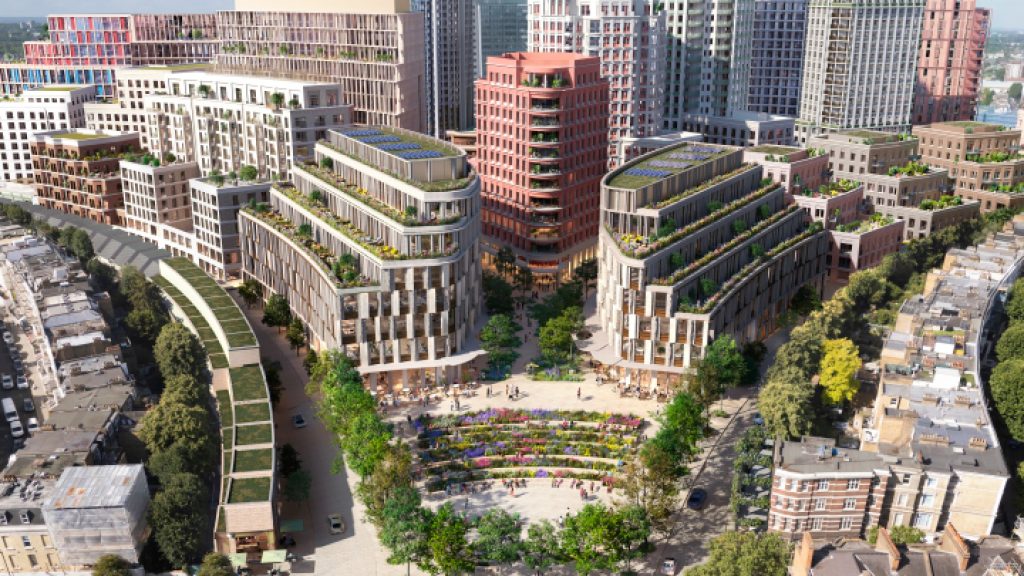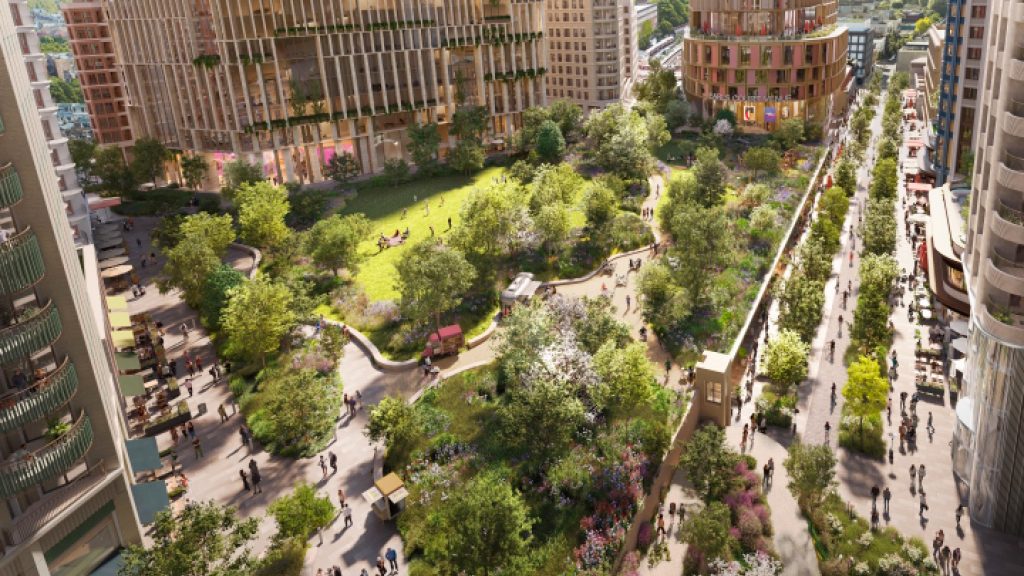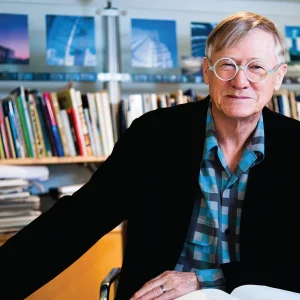
Sharon Giffen is Head of Design for The Earls Court Development Company and with over 20 years of architectural expertise, she is at the forefront of world-class design, particularly in large masterplans and mixed-use developments. Currently, she is spearheading the masterplan and building design proposals for the iconic 40-acre Earls Court site, a project that holds significant promise for the future of urban living in London.
Before taking on this pivotal role, Sharon was a key member of Transport for London’s commercial development team, where she played a crucial role in championing design quality across a diverse portfolio of sites throughout the capital. Her impressive career also includes a notable 14-year tenure at Foster + Partners, where she led ambitious architectural initiatives on regeneration and infrastructure projects globally.
What makes Sharon’s journey even more compelling is her personal connection to the Earls Court area, as it is where her parents first met after immigrating from Ireland and Colombia. Last month I delved into Sharon’s insights on design, urban development, and the unique vision she brings to this transformative project.

Emily Martin: Thank you for joining me today, Sharon. To start, could you share a bit about your educational background? Where did you study, and what did you focus on?
Sharon Giffen: I studied architecture at Cambridge University, where I completed my Part 1. After that, I took a year out in Cape Town, South Africa, working with disadvantaged communities on self-build housing projects with an NGO. It was an incredible experience that opened my eyes to the importance of accessible housing. I then continued my studies at Edinburgh University for my Part 2 and completed my Part 3 at London Metropolitan University.
Emily Martin: What initially drew you to architecture? Was it a lifelong ambition, or did you find your way into it more organically?
Sharon Giffen: Interestingly, my mother is an architect, and her father was as well. She immigrated from Colombia in the early ’70s and became the first registered female Colombian architect in the UK. Her journey was inspiring, but she initially tried to dissuade me from pursuing architecture, knowing the challenges it entails. However, I was drawn to the creative aspects and the cultural experiences we shared during our travels. I participated in programmes aimed at encouraging girls into engineering and architecture, which further solidified my interest.
Emily Martin: You’ve had quite a journey in your early career. After completing your qualifications, where did you begin working?
Sharon Giffen: I started at a smaller practice, focusing on community projects funded by the lottery. I worked on various initiatives, including community centres and theatres, which allowed me to engage with diverse communities. After a few years, I transitioned to Foster + Partners, where I spent 15 years working on large-scale regeneration projects.
Emily Martin: What was your experience like at Foster + Partners? Did you intend to stay there for so long?
Sharon Giffen: Initially, I planned to stay for just a couple of years to learn about large-scale projects. However, I became deeply involved in significant regeneration efforts, including an eight-year project in Stockholm. The opportunity to see projects through from inception to completion kept me engaged longer than I anticipated.

Emily Martin: After your extensive time at Foster and Partners, you moved to Transport for London (TfL). What prompted that transition?
Sharon Giffen: By 2019, I felt it was time for a new challenge. I wanted to have more agency in design decisions, particularly in the public sector, which had seen a decline in in-house architectural expertise. I joined TfL through a public practice programme aimed at enhancing design expertise within local authorities.
Emily Martin: And then transitioning from TfL to the Earls Court Development Company?
Sharon Giffen: I joined TfL at the end of 2019. I was brought in to lead the new master plan process, which involved selecting architects and managing the competition. Eventually, I became a permanent member of the team due to the project’s scale and significance.
Emily Martin: Can you provide an overview of the projects you’ve been working on at Earls Court over the past three years?
Sharon Giffen: We’re working on a 44-acre site that aims to create a mixed-use destination with a focus on public spaces. The master plan includes residential, commercial, and cultural venues, with about 60-70% of the site dedicated to residential development, totalling around 4,000 homes. We’re prioritising landscape and public access, creating a welcoming environment for everyone.
Emily Martin: What is the timeline for the project’s completion?
Sharon Giffen: We’re looking at a 20-year programme to build out the site. We submitted our planning application last summer and hope to receive consent this year, allowing us to start construction by 2026. The first buildings are expected to open around 2030.

Emily Martin: This sounds like a pivotal moment in your career. Do you see yourself staying with this project long-term?
Sharon Giffen: I would love to stay with it for as long as possible. I’ve become deeply embedded in the community, and the project holds personal significance for me. My parents met in Earls Court, and I feel privileged to contribute to its revitalisation.
Emily Martin: As a woman in a traditionally male-dominated field, how have you navigated your career in architecture?
Sharon Giffen: The industry is evolving, but we still have a long way to go regarding gender balance and diversity. I’ve often been the only woman in the room, but I’ve used those experiences to empower others. We’ve recently partnered with an organisation called Upfront to help women in our company and our consultants build confidence and find their voices in male-dominated spaces.
Emily Martin: What drives you in your work and life?
Sharon Giffen: My primary motivation is to create inclusive, welcoming spaces that leave a lasting legacy. I want to ensure that future generations can enjoy and take pride in the places we design. It’s essential to reflect the diversity of voices in our cities, and I strive to incorporate that into my work.
Emily Martin: Thank you for sharing your insights, Sharon. Is there anything else you’d like to add before we conclude?
Sharon Giffen: I’d like to highlight the collaborative nature of our work at Earls Court. We’re engaging with a variety of architectural practices, which enriches the design process. This diversity of thought is crucial for creating innovative solutions that resonate with the community.





